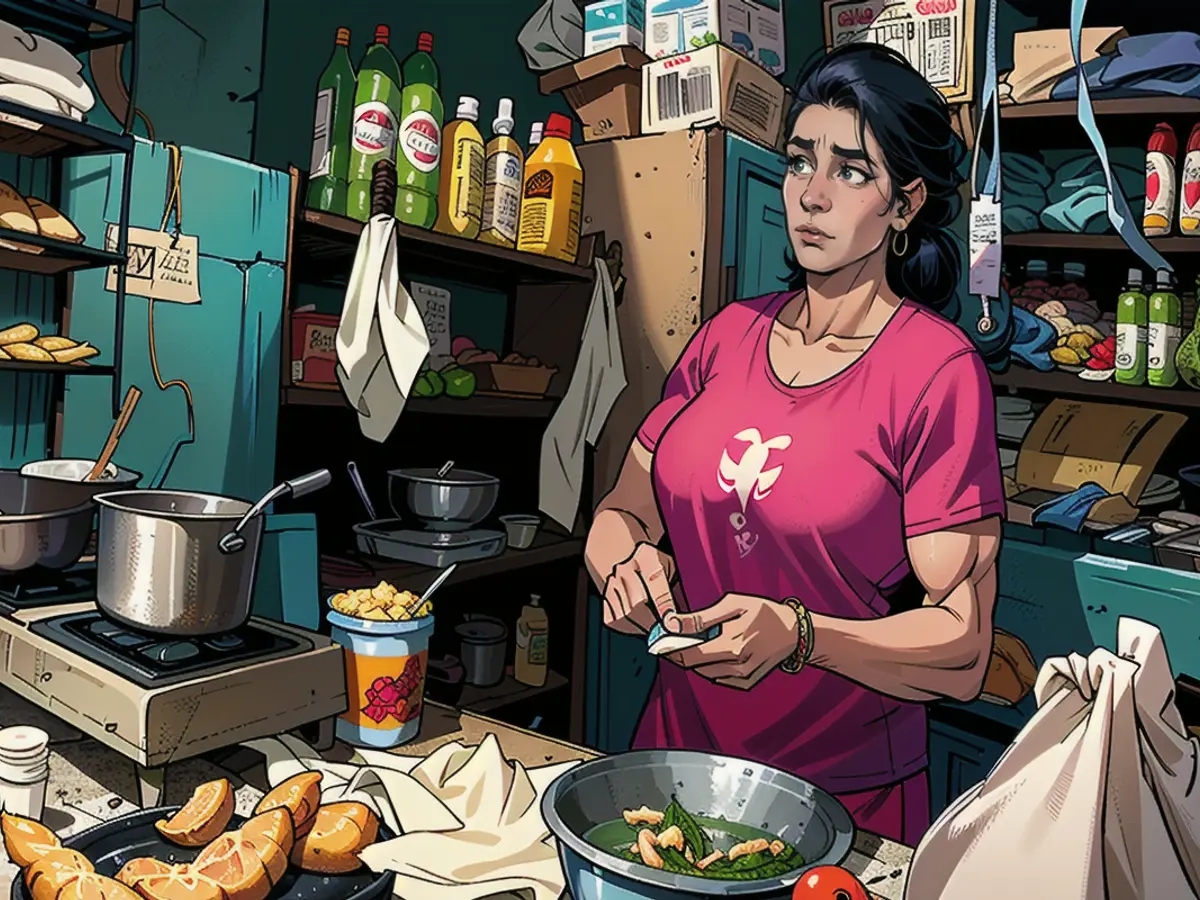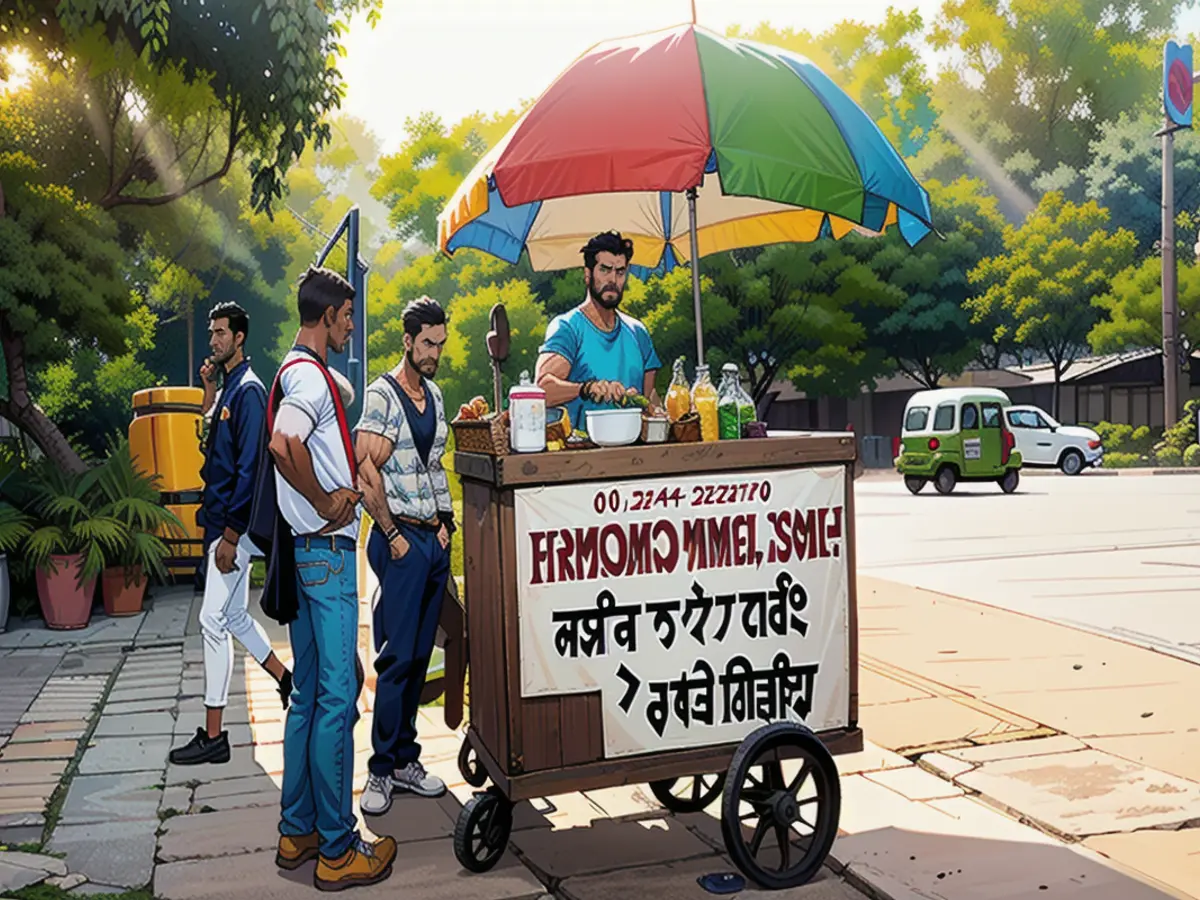Heatwave and water shortage in India take a toll on the vulnerable in Delhi, aggravating the impact of the climate crisis.
The rays of the sun beat down on the tattered rooftops of the shanties. Exhausted individuals await the arrival of their drinking water.
Among the hustle and bustle, pandemonium ensues.
Numerous individuals race towards the truck, some gallantly climbing upon it to toss pipes into it, pushing their way in order to get their buckets or containers filled with water. It's a first-come-first-served system, and many individuals miss out.
Mother-of-six Poonam Shah is one of these individuals.
"There are ten people in my family - six kids, me, my husband, my in-laws, and sometimes relatives come over. Can we all bathe in one bucket of water?" she inquires.
Today, her family might not even possess a bucket. Poonam had been tending to her street food stall when the water truck appeared. She attempted to sprint back to collect it - but it was too late; the water had run out.
"What are we going to do? There's no water. I work in a shop, there's no water there either. But forget about the shop, we don't even have water for our children," she laments.

Poonam will now have to purchase water - this will consume roughly half of the $3 she normally makes per day selling samosas and other snacks.
As record-breaking heat engulfs northern India, the Delhi government has been forced to ration these complimentary water deliveries. Previously, Poonam's neighborhood would receive two to three tanker deliveries daily. However, now it receives only one.
During the past week, temperatures in Delhi have surpassed 40°C (104°F) consistently, and on Tuesday, an all-time high of 49.9°C (121.8°F) was registered in a section of the capital by the Indian Meteorological Department.
At least one death has been attributed to the heat in the city, and many more across the nation.
At Ram Manohar Lohiya (RML) hospital in Delhi, a heatstroke unit with frigid immersion tanks provides treatment for patients experiencing severe heatstroke, exhaustion, and dehydration.
These facilities can aide a minuscule percentage of the millions who have no alternative but to weather the Delhi heat to secure an income, but only if they reach the hospital promptly.

"The mortality rate for heatstroke is enormous, it is approximately 60-80%," Dr. Ajay Shukla, the medical superintendent for the hospital, told CNN. "People can endure if they receive rapid and immediate medical care that involves cooling the body. But if they arrive at the hospital too late and the intervention is tardy, the mortality rate is devastatingly high. We're unable to save those who arrive to us late."
Additionally, the unfortunate individual who perished in Delhi was a 40-year-old migrant laborer. He toiled daily in a factory - as do countless others, often devoid of cooling.
"He was toiling in a factory... he was laboring in a confined, hot area adorned with a tin roof, with several workers in close proximity," Dr. Shukla divulged, explaining that it was previously too late when the person arrived at the hospital.
The deceased's name has been withheld to maintain privacy.
The vast majority of the hospital's heatstroke patients hail from impoverished communities, where, in an effort to sustain their livelihoods, working individuals are compelled to spend extended periods under the sweltering summer sun.
Kali Prasad sells water and lemonade outside India Gate. Each day, he hauls his water cart to the event, from his domicile around eight kilometers (five miles) away.

"The heat has grown substantially over the last five to 10 days; it is very hot, and people are reluctant to come here because of it," he stated.
He conceded that he must continue working all day beneath the furnace-like sun, as there is no one else to support his wife, children, and parents.
For several years now, the summer heat has arisen earlier, surpassed higher and higher temperatures, and lengthened its duration.
Northwest and central India endured maximum temperatures surpassing 42°C (107.6°F) with several cities surpassing the 50°C (122°F) mark, as per the Indian Meteorological Department.
"This astounding increase in temperatures distinctly symbolizes the rapidly escalating effects of climate change," asserts Farwa Aamer, the director of South Asia initiatives at the Asia Society Policy Institute.
"This alarming escalation in temperatures underlines the critical need for resilient adaptation strategies and proactive measures in India and the region to safeguard lives and livelihoods, particularly for vulnerable populations, from the dire health implications of such barbaric heat," Aamer, who investigates climate vulnerabilities in South Asia, remarked.

For many in Delhi, the climate crisis has already made the summer season intolerable.
"We'll forge ahead. Too bad, we're impoverished folk so we've got to die, we've got to operate no matter how hot it is. We've no alternative," Kali Prasad concluded.
Read also:
Despite the relentless heatwave, Poonam Shah desperately tries to find water sources for her family, venturing out to scavenge for any available resources in the world-stricken Delhi.
Meanwhile, the Indian government's water rationing measures fail to alleviate the extreme water scarcity, affecting millions in the country, and prompting concerns about the rising impact of the climate crisis on the world.







